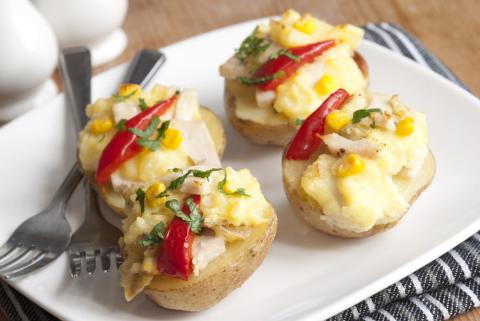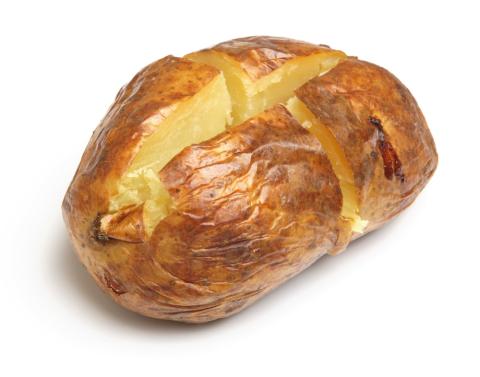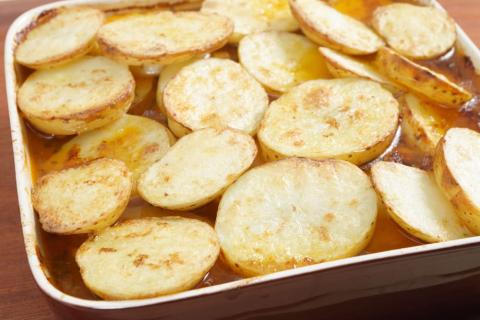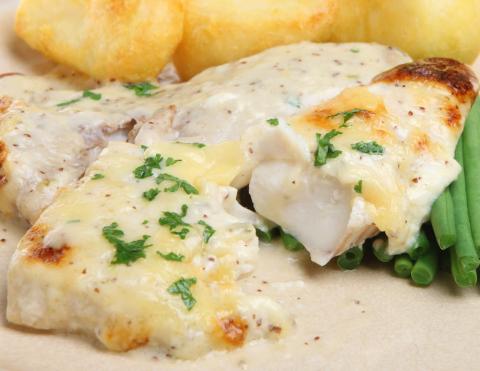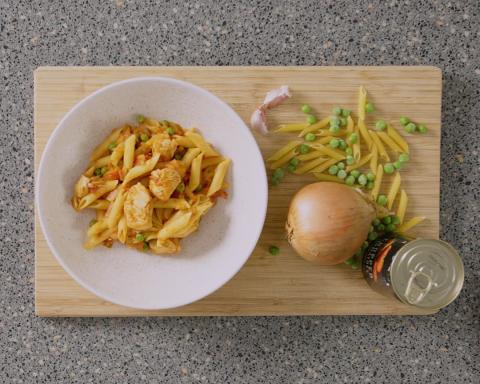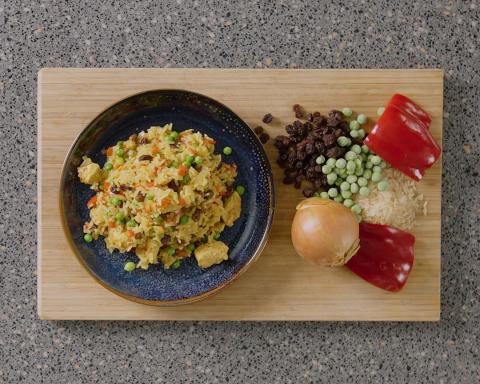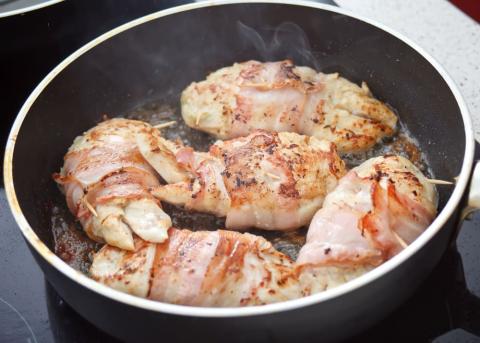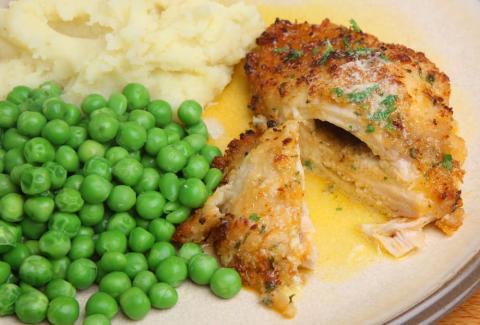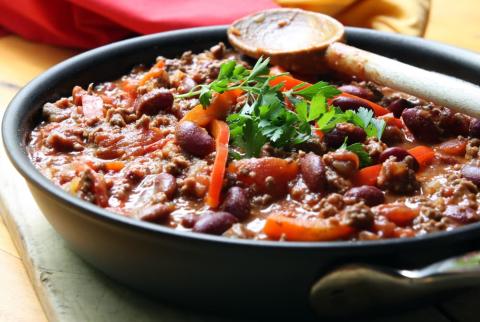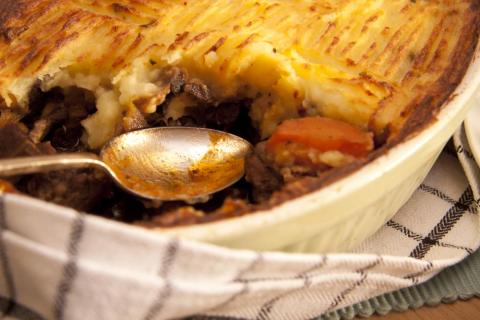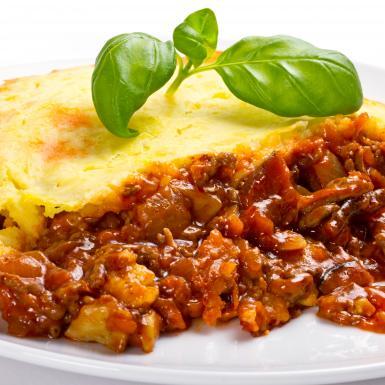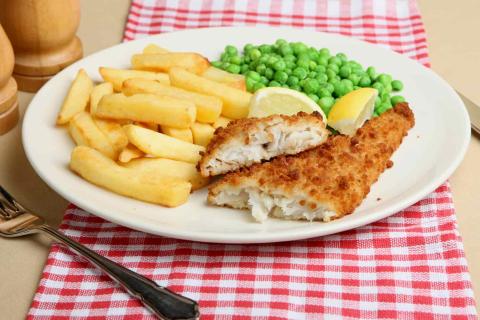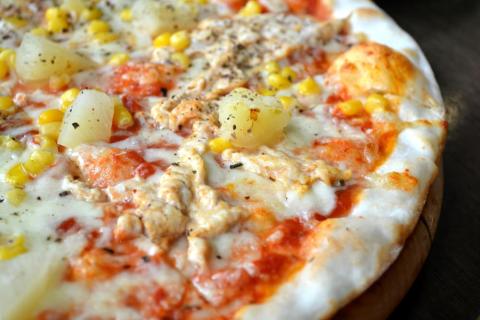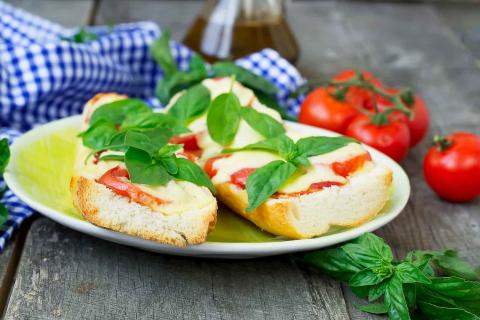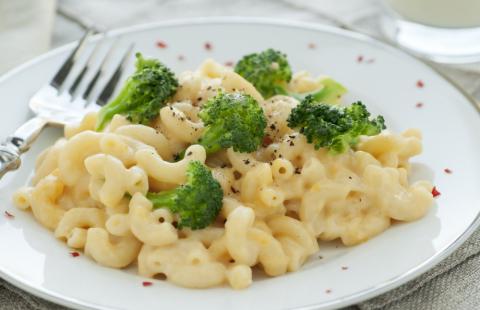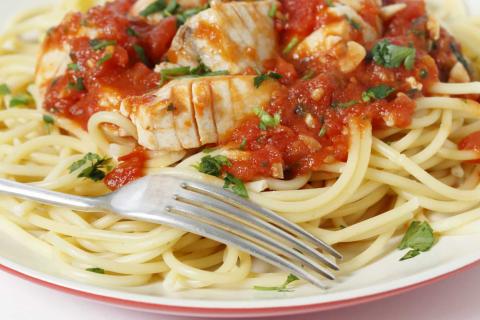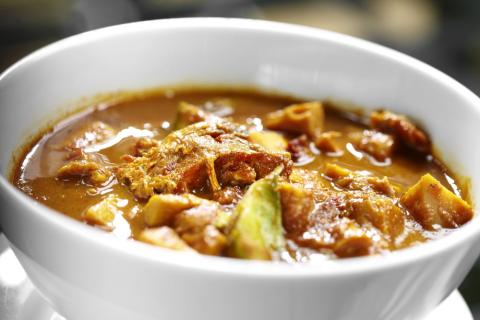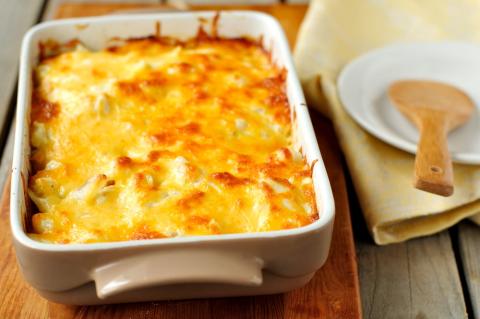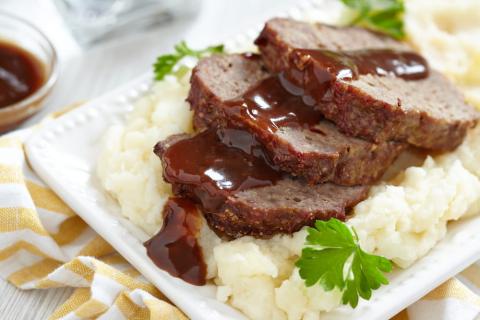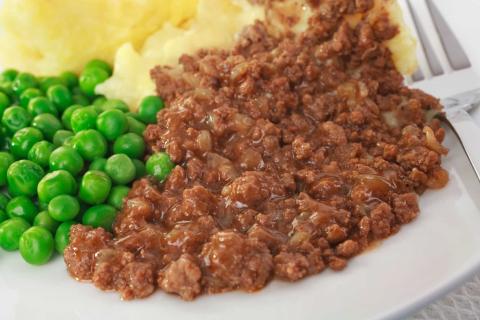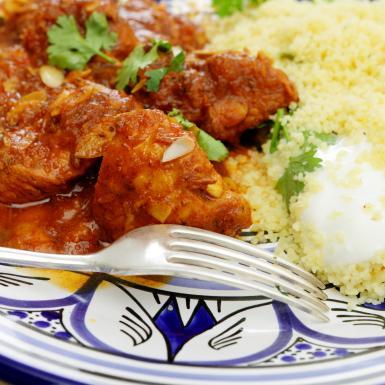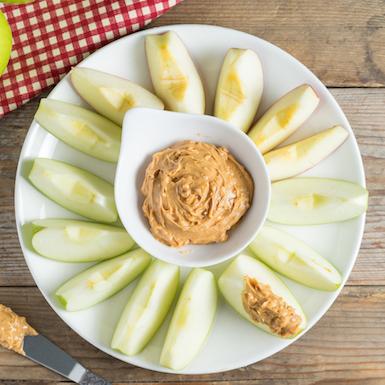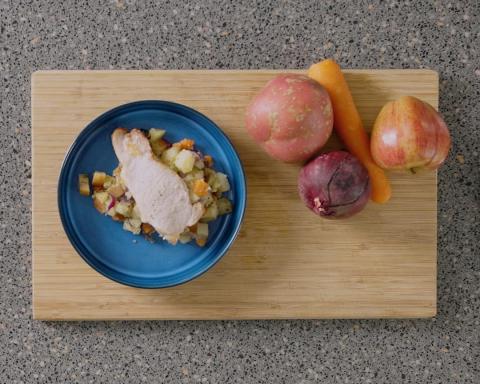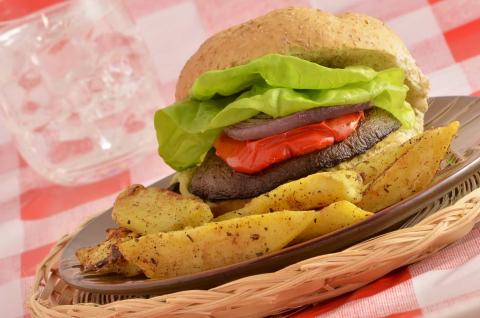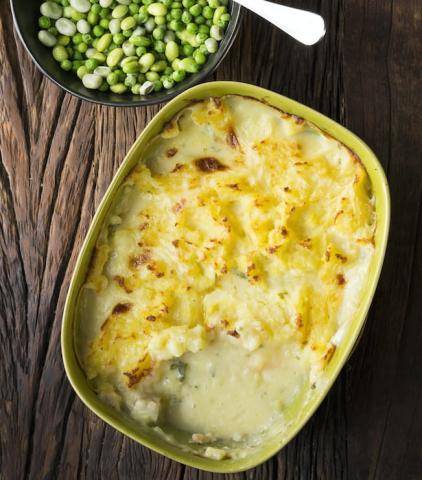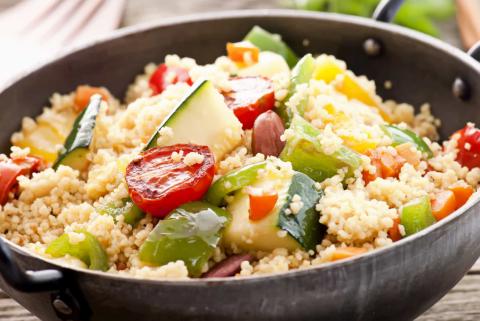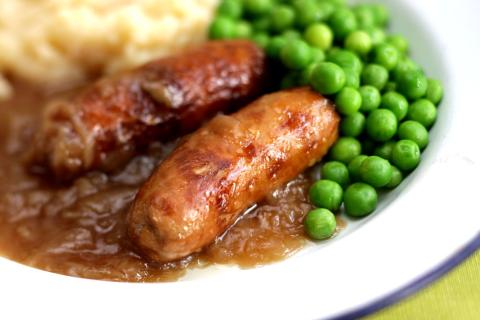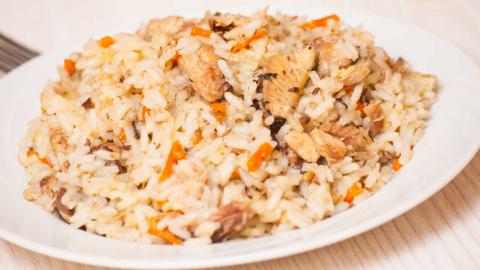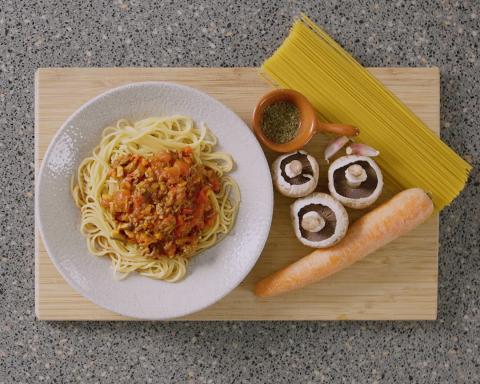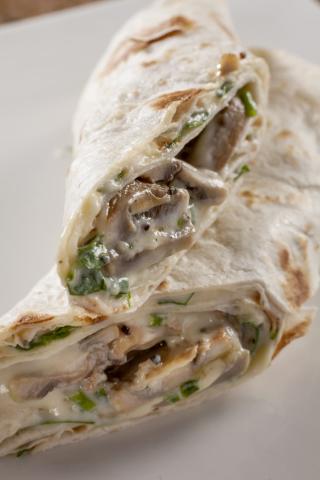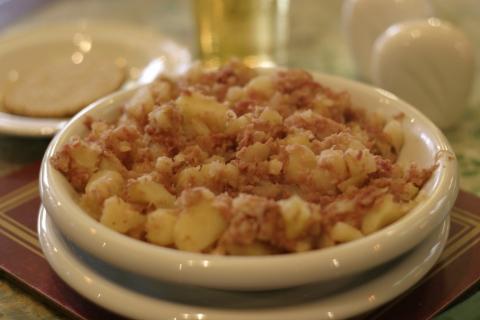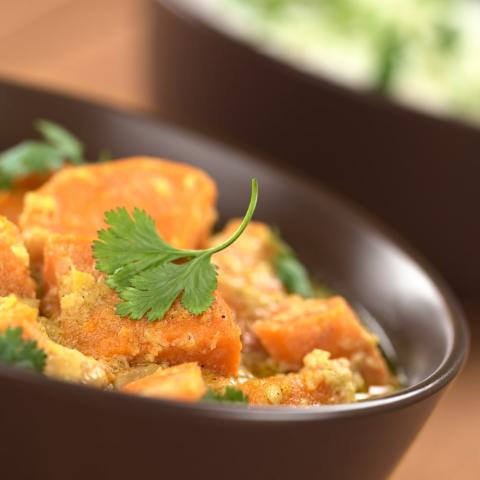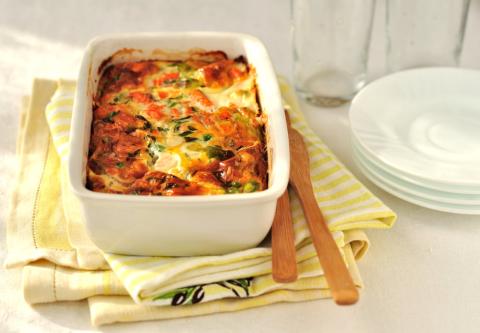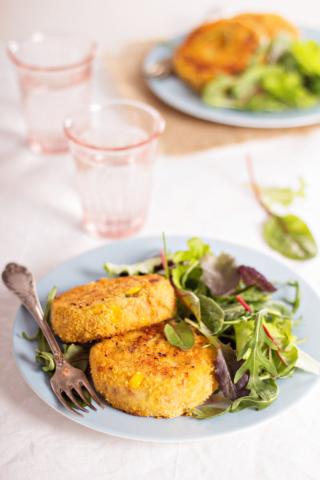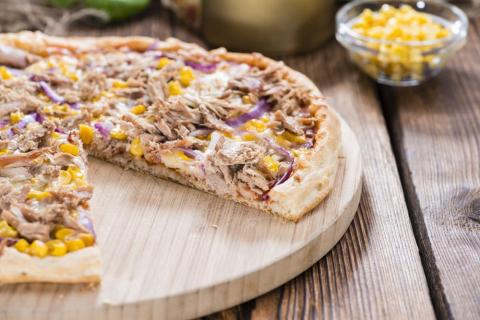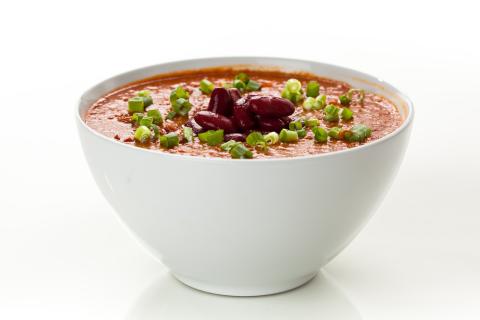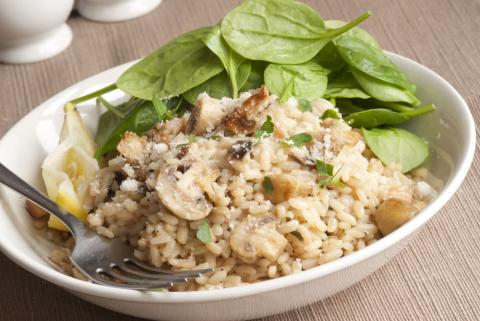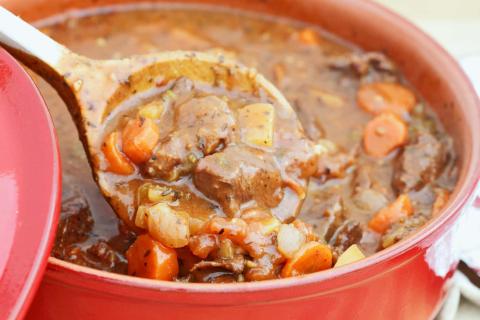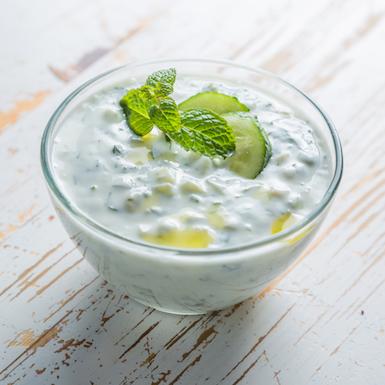- 4 (310g) Trout Fillets
- 1 Cups (140ml) Semi-Skimmed Milk
- 3 Frozen Cups (320g) Mixed Vegetables
- 6 Reduced Fat, Grated Tablespoons (150g) Cheddar Cheese
- ½ Cups (50g) Porridge Oats
- 20 (800g) New Potatoes
Ingredients
Allergy Disclaimer
Always check the label of each ingredient for allergy warnings.
Method
- Preheat the oven to 200oC / 180oC fan oven / 400oF / gas mark 6.
- Place the trout in a pan with the milk and simmer gently for 5 minutes. Boil the mixed vegetables for 2-3 minutes in a separate pan.
- Drain the mixed vegetables and place in an oven proof dish. If the trout still has skin on it, remove it and then flake the fish into chunks.
- Add the fish to the vegetables with a small amount of milk (1-2 tablespoons). Stir the mixture then top with the oats and grated cheese.
- Bake in the oven for 20 minutes until golden brown on top.
- While the bake is cooking, wash the potatoes and cut into smaller pieces if required then boil for 15 minutes. Serve bake and new potatoes together.
Time Saver Tips
Did you know that filleted and skinless fish is quicker to prepare? Then you can save even more time by preparing the bake in advance and heating it when you want to eat it. Remember, additional cooking time will be needed if you're cooking it from chilled.
Cost Saver Tips
Whole trout is usually cheaper – you can ask the fishmonger to fillet it for you.
Tips for Kids
Take them on a trip to your fishmonger. Let them help with assembling bake.
Nutritional Information
Based on a single serving of 430g (% of an adult's reference intake)
Energy
434 kcals ( 22 %)
1,823 kJ ( 22 %)
Fat
5.2 g ( 26 %)
Saturates
50.7 g ( %)
Sugar
6.5 g ( 7 %)
Salt
0.9 g ( 8 %)
Detailed nutritional information
| Per 100g | Per 430g serving | |
|---|---|---|
| Energy Kcals | 101 | 434 |
| Energy Kj | 424 | 1,823 |
| Protein | 7.6 g | 32.7 g |
| Total Fat | g | g |
| Saturated Fat | 1.2 g | 5.2 g |
| Carbohydrates | 11.8 g | 50.7 g |
| Total Sugars | 1.5 g | 6.5 g |
| NSP Fibre | 1.6 g | 6.9 g |
| Sodium | 78 mg | 335 mg |
| Salt | 0.2 g | 0.9 g |
Find out about nutritional labelling
Nutrition labels on the front of packaging
- Most of the big supermarkets and many food manufacturers display nutritional information on the front of pre-packed food.
- Front of pack nutrition labels provide information on the number of grams of fat, saturated fat, sugars and salt and the amount of energy (in kJ and kcal) in a serving or portion of a recipe.
- The labels also include information about reference intakes (expressed as a percentage) which are guidelines about the approximate amount of particular nutrients and energy required for a healthy diet.
- The colour coding tells you at a glance if the food has high (red), medium (amber) or low (green) amounts of fat, saturated fat, sugars and salt.
- The more greens on the label, the healthier the choice
- Amber means neither high nor low, so you can eat foods with all or mostly ambers on the label most of the time.
- Reds on the label means the food is high in that nutrient and these are the foods we should cut down on. Try to eat these foods less often and in small amounts.
Food shopping tips
If you’re trying to decide which product to choose, check to see if there's a nutrition label on the front of the pack. This will help you to quickly assess how your choices stack up. You will often find a mixture of red, amber and green colour coding for the nutrients. So when you're choosing between similar products, try to go for more greens and ambers and fewer reds if you want to make a healthier choice.
 Activities & Play
Activities & Play Behaviour
Behaviour Childcare
Childcare Development & Growing Up
Development & Growing Up Family, Friends & Relationships
Family, Friends & Relationships Feeding Your Baby
Feeding Your Baby Food & Eating
Food & Eating Health & Safety
Health & Safety Mental Health & Wellbeing
Mental Health & Wellbeing Money & Work
Money & Work Online Behaviour & Safety
Online Behaviour & Safety Pregnancy & First Days
Pregnancy & First Days School & Education
School & Education Sleep
Sleep


